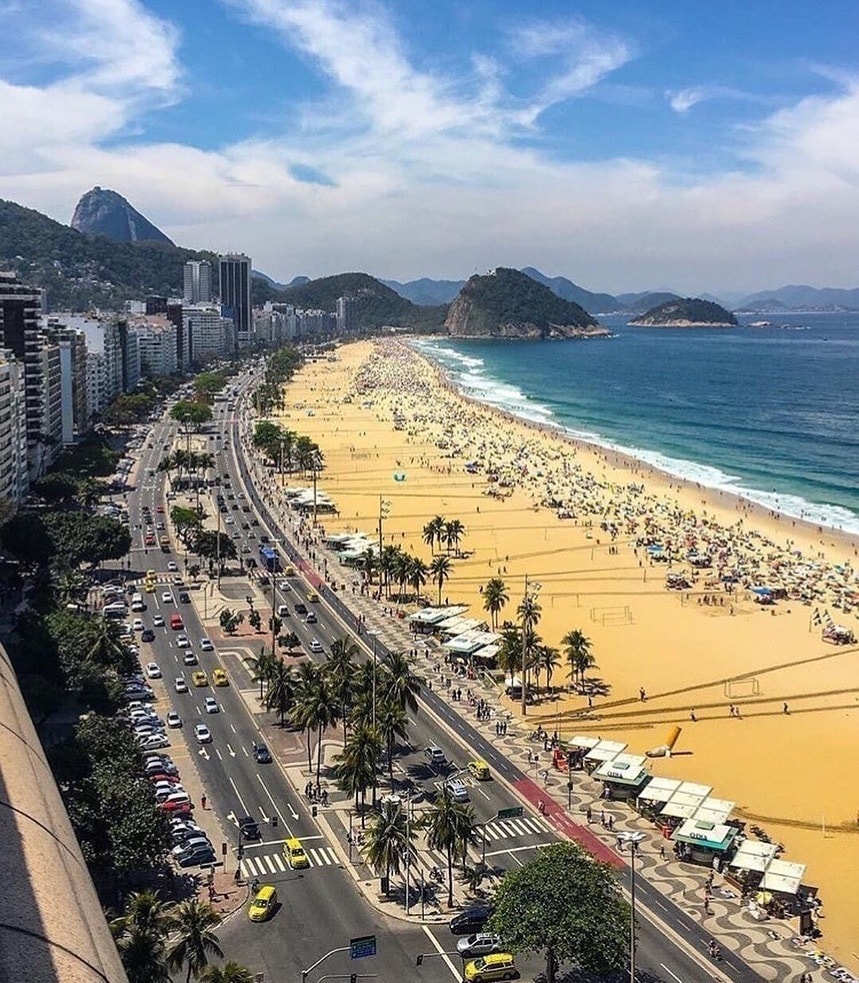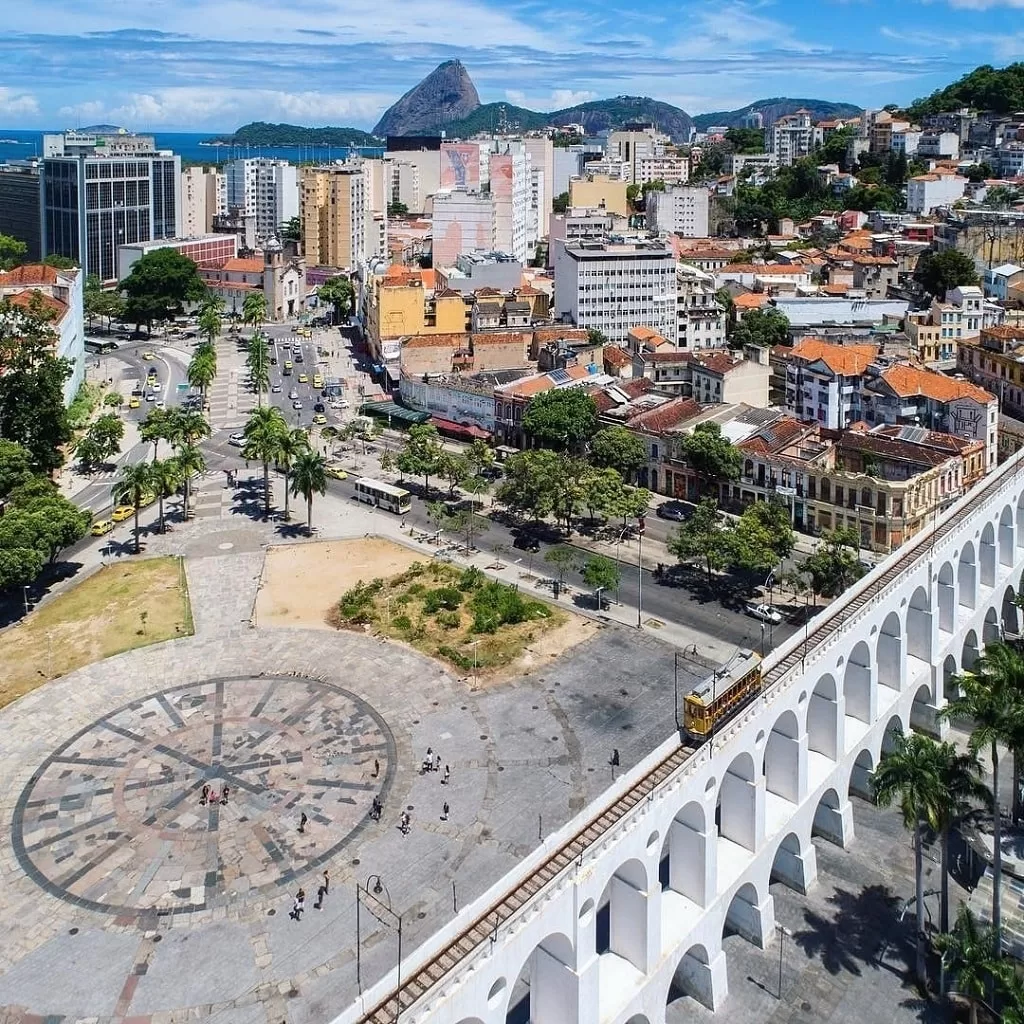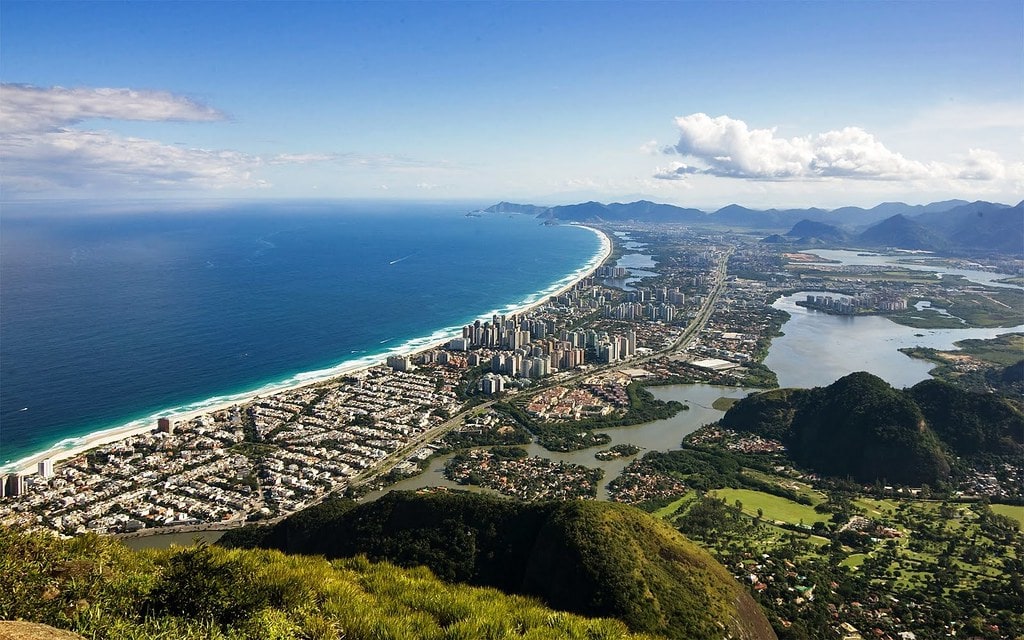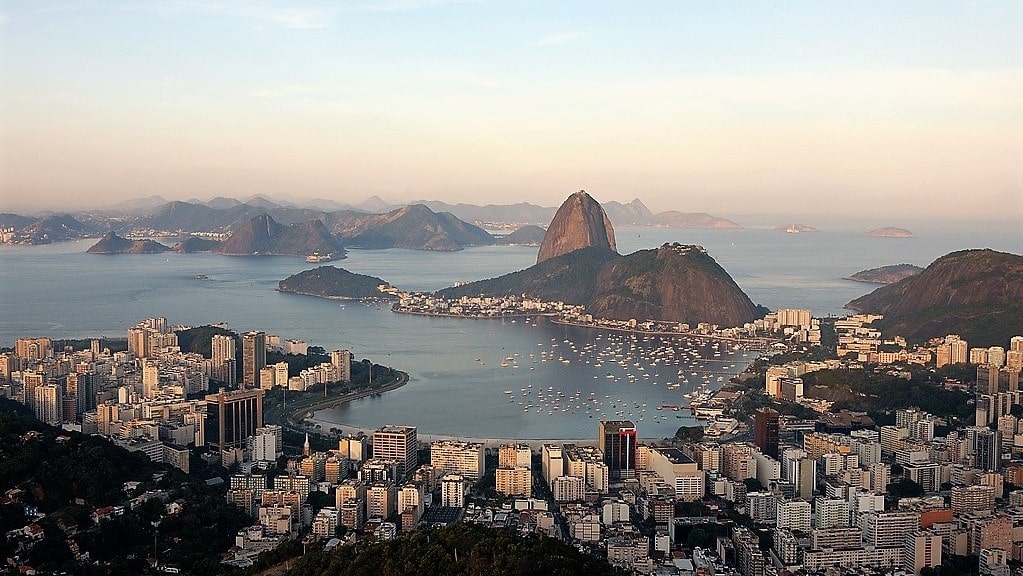If you are planning a trip to Brazil and are unsure where to stay in Rio de Janeiro, this article is for you.
This post explains how the city is geographically divided and covers the essential features of the most famous districts.
So read this article to learn how to choose the region that best suits your needs, ensuring an excellent experience during your stay in Rio de Janeiro.
Rio de Janeiro Zones and Districts

The city of Rio de Janeiro is divided into four main zones: Central (downtown), South (the most tourist region), North, and West Zones. The main regions (and most populous) are South and North Zones.
The South Zone, nestled south of the Tijuca Forest, is not only the most touristic but also the most popular region. Its neighborhoods are known for their nobility, accommodation, and transportation options, making them ideal for tourists. Moreover, they are conveniently located near the beach, adding to their allure. Downtown and the West Zone also have suitable regions with very local characteristics, which we describe further in this post.
But what about the favelas?
Rio de Janeiro is home to a unique cultural landscape and is recognized by Unesco for its beauty. However, the city is also surrounded by mountains and favelas (slums). Therefore, no matter what region of the city you are in, there will always be a slum nearby, as these communities are already part of the town’s landscape. Now, it is fair to say that the ones located in the South Zone, like Rocinha and Vidigal, are considered the most popular and, therefore, tourist-friendly ones.

Carioca Tip:
Although many tourists want to visit favelas, we do not recommend staying in one of them. No matter how big your curiosity is, your safety is more important. And the truth is that these regions are not completely prepared to receive tourists.
Which neighborhood should I choose to stay in Rio de janeiro?
Now that you know the four main zones of Rio de Janeiro, here are some famous neighborhoods where you find most tourist attractions and points of interest.
South Zone
Copacabana

Copacabana is the most touristic region of Rio de Janeiro and probably one of the most famous neighborhoods in the world.
It is a typical Carioca neighborhood surrounded by a beautiful beach with the same name. There are lots of hotels, bars, and restaurants to choose from.
Read more: Ultimate Guide to enjoy Copacabana beach.
It’s located in the heart of the South Zone and perfect for getting around, especially if you’re staying near one of its three subway stations. Consequently, it is also one of the most expensive regions.
→ Find the best accommodation options in Copacabana here.

Carioca Tip:
If you’re looking for a peaceful and quiet place to stay in Rio de Janeiro, avoiding Copacabana is best. The neighborhood is always bustling with people, which doesn’t make it an ideal choice for those seeking relaxation. Furthermore, being cautious with your valuables and staying alert while in the area is essential. Copacabana is a popular tourist spot, making it a frequent target for thieves and pickpockets.
Ipanema and Leblon
Ipanema and Leblon are the noblest neighborhoods in the city and have the most expensive m2 as well. If you are not traveling on a tight budget, and enjoy luxury and comfort, choose one of these two options. Enjoy its beaches, tree-lined streets, refined restaurants, trendy bars, and the beauty of Rodrigo de Freitas Lagoon.
Additionally, Ipanema and Leblon have inspired famous Bossa Nova musicians such as Tom Jobim and Vinícius de Morais, among others. Staying in these neighborhoods will give you a genuine feel of the Carioca lifestyle.
→ Find the best accommodation options in Ipanema and Leblon here.

Carioca Tip:
On bright sunny days, make sure you visit the famous Pedra do Arpoador to experience the favorite sunset spot of the Cariocas.
Botafogo, Flamengo, Largo do Machado, and Laranjeiras
Botafogo, Flamengo, Largo do Machado, and Laranjeiras are historical and traditional Carioca neighborhoods between the iconic Sugarloaf and Corcovado mountains. They are known for their bohemia and palaces that recall their glory days. However, compared with their famous neighbors, they offer a lower cost of living.
So, if you’re keen on experiencing the charm of the South Zone but find Copacabana, Ipanema, and Leblon a bit steep for your budget, these neighborhoods are your best bet. While their beaches may not be ideal for swimming, they offer an authentic Carioca experience at a fraction of the cost.
→ Find the best accommodation options in Botafogo and region here.
Central Zone (Downtown)
Lapa

If you enjoy nightlife and a more bohemian way of life, Lapa is the perfect place to stay. This region is filled with bars and restaurants that offer live music, samba venues, and concert houses. When looking for accommodations, try to find places on Mem de Sá Avenue, Lavradio, or Riachuelo streets. However, it’s best to avoid other areas. If you venture outside of this perimeter, you will enter the commercial center of the city, which tends to be deserted at night and lacks police vigilance.
Read more: Top 10 things to see and do in Lapa and where to enjoy the best samba shows.
→ Find the best accommodation options in Lapa and Downtown and region here.
North Zone
Tijuca

If you’re traveling on a tight budget and looking for better value for money, it’s worth considering staying in Tijuca near a subway station. Tijuca is the most traditional neighborhood of the North Zone and was once considered a prime area due to its mansions and palaces. Nowadays, it’s a typical Carioca residential neighborhood with many excellent bars and restaurants to explore, especially near Saens Pena Station and Praça Varnhagem.
Additionally, you can enjoy the proximity to visit or watch a soccer game at Maracanã Stadium.
Read more: how to visit the Maracanã Stadium.

Carioca Tip:
When looking for your accommodation, distinguish Tijuca from Barra da Tijuca. They are two different neighborhoods. The first is in the North Zone, and the second is in the West Zone.
West Zone
Barra da Tijuca

If you’re looking for a place to stay in Rio de Janeiro that is close to both the beach and shopping centers, Barra da Tijuca might be a good option for you. Locals often refer to it as “the Brazilian Miami” because of its wide streets, numerous shopping malls, and modern buildings. The area also has many hotels to choose from.
While you will have easy access to a beautiful beach just across the street, keep in mind that you may need a car to get around the city or the neighborhood. You will indeed have a great beach just across the street, but you will likely need a car to go anywhere else in the city or the neighborhood.
→ Find the best accommodation options in Barra da Tijuca here.
Conclusion: where to stay in Rio de Janeiro?
For those who spend a few days in the city, choosing the South Zone will make it easier to get around. Additionally, it will allow you to know more places in less time. That’s why we recommend that, if possible, you choose one of the South Zone neighborhoods to stay in Rio de Janeiro.

Carioca Tip:
As a general suggestion, choose accommodation near the subway stations, regardless of which region you plan to stay in. The subway system serves downtown tourist areas in the South Zone, Tijuca, and Barra da Tijuca. It’s the city’s most convenient and efficient mode of transportation, and you’ll have greater comfort and save a lot of time by using it.
So, did you find which region of the city best suits your profile?
If you need assistance in planning your stay or would like to have a customized itinerary for your trip, get in contact with us! We can help you make your trip to Rio de Janeiro unforgettable!
And if you are interested in experiencing the local culture of Rio during your stay, check out our unique and private local tour experiences and explore Rio de Janeiro like a local.





Pingback: How to buy a SIM card in Rio de Janeiro
Pingback: Rio de Janeiro International Airport (GIG) Guide
Pingback: Erros que você deve evitar ao viajar para o Rio de Janeiro
Pingback: Mistakes to avoid when traveling to Rio de Janeiro